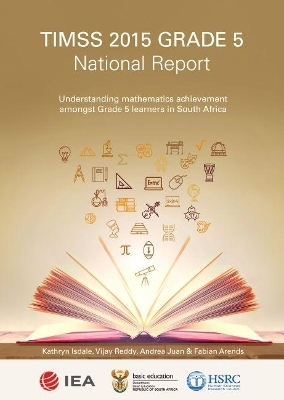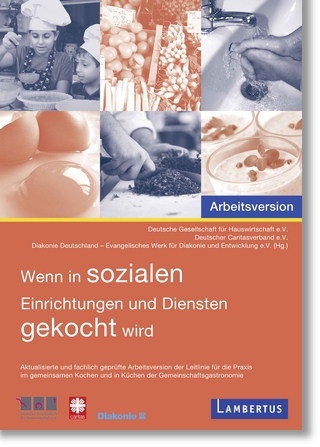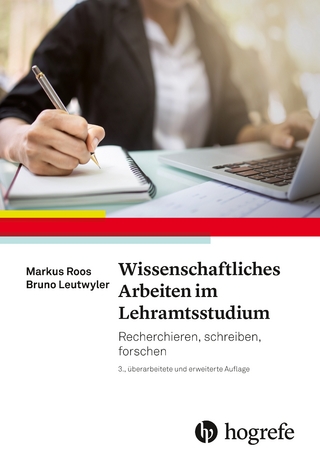
TIMSS 2015 Grade 5 national report
HSRC Press (Verlag)
978-0-7969-2484-1 (ISBN)
The 2015 TIMSS Grade 5 study was administered for the first time in South Africa in August 2015. The study was led by a team of researchers at the Human Sciences Research Council (HSRC) in collaboration with the Department of Basic Education (DBE) and the International Association for the Evaluation of Educational Achievement (IEA).
Providing the first, nationally representative, internationally comparative compendium of data on Grade 5 learners in South Africa, the report is a new indicator of the health of our educational system. The analyses describe in detail the current picture of achievement for learners in the country, highlighting key individual, family, school and provincial differences. The results also include key developments concerning preschool attendance, early learning environments, as well as the importance of educational expectations and academic beliefs, and the damaging effects of bullying. The findings highlight the importance of early achievement and the need to understand the multiple layers of influence on educational pathways, with the conclusions and recommendations highlighting an unequal, yet treatable system.
The Grade 5 study sits alongside the Grade 9 study which has been carried out in South Africa since 1995, recently completing its fifth round.
Acknowledgements
List of figures
List of tables
List of acronyms
Executive summary
Part A: Early Achievement In South Africa
1. Introduction
1.1 Getting the foundations right
1.2 Social inequalities
1.3 Signposting the rest of the report
2. Methodology
2.1 Data
2.2 Performance benchmarks
2.3 The current study
2.4 Analytic approach
3. Education and skills in the South African context
3.1 Prioritisation of Grade R and early years enrolment
3.2 Educational throughput
4. The big picture: understanding mathematics achievement
4.1 South African mathematics performance in relation to that of other countries
4.2 Mathematics achievement in South Africa
4.3 Provincial mathematics achievement at Grade 5
4.4 Differences in average mathematics achievement, by school type
Section summary
Part B: Learners And The Home Environment
5. A profile of Grade 5 learners in 2015
5.1 Gender, age and achievement
5.2 Language of learning and teaching (LoLT)
6. How learners live and learn
6.1 Home resources
6.2 Indicators of socioeconomic status (SES)
7. The early educational environment
7.1 Early educational activities
7.2 Preschool attendance
8. Early academic skills
8.1 Early literacy skills
8.2 Early numeracy skills
8.3 Principals’ assessment of early academic skills
9. Educational expectations and beliefs
9.1 Educational expectations
9.2 Academic beliefs
Section summary
Part C: A Comparison Of Schooling Environments
10. Where learners go to learn
10.1 School resources
10.2 Access to workbooks
10.3 Assessment of resource shortages
11. School climate
11.1 Emphasis placed on academic success
11.2 Parents’ perception of school performance
11.3 School belonging
11.4 Discipline, safety and bullying
12. A profile of Grade 5 educators
12.1 Challenges facing educators
12.2 Limitations for teaching
12.3 Educator absenteeism
Section summary
Part D: Summarising Influences On Grade 5 Mathematics Achievement
13. Summarising relationships
13.1 A profile of learners
13.2 Resources in the home
13.3 The early educational environment and early academic skills
13.4 Educational expectations and beliefs
13.5 School resources
13.6 School climate
13.7 A profile of educators
13.8 School type and province
Section summary
Part E: Improving Mathematics Achievement
14. A focus on “potentials”
14.1 Who are the so-called “potentials”?
Section summary
Part F: Key Findings, Policy Implications And Recommendations
Appendix A1: Timss-Numeracy 2015 Design And Methodology
Appendix A2: Curriculum Analysis
Appendix A3: Summary Of Association Results By School Type
Appendix A4: Descriptive Statistics For All Variables Used In The Analysis
Appendix A5: Questions Used To Assess School Climate
References
Index
| Erscheinungsdatum | 14.03.2018 |
|---|---|
| Verlagsort | Cape Town |
| Sprache | englisch |
| Maße | 210 x 297 mm |
| Themenwelt | Schulbuch / Wörterbuch |
| Sozialwissenschaften ► Pädagogik ► Allgemeines / Lexika | |
| Sozialwissenschaften ► Pädagogik ► Bildungstheorie | |
| ISBN-10 | 0-7969-2484-8 / 0796924848 |
| ISBN-13 | 978-0-7969-2484-1 / 9780796924841 |
| Zustand | Neuware |
| Haben Sie eine Frage zum Produkt? |
aus dem Bereich


